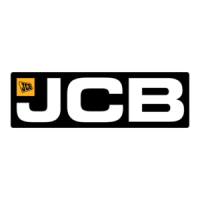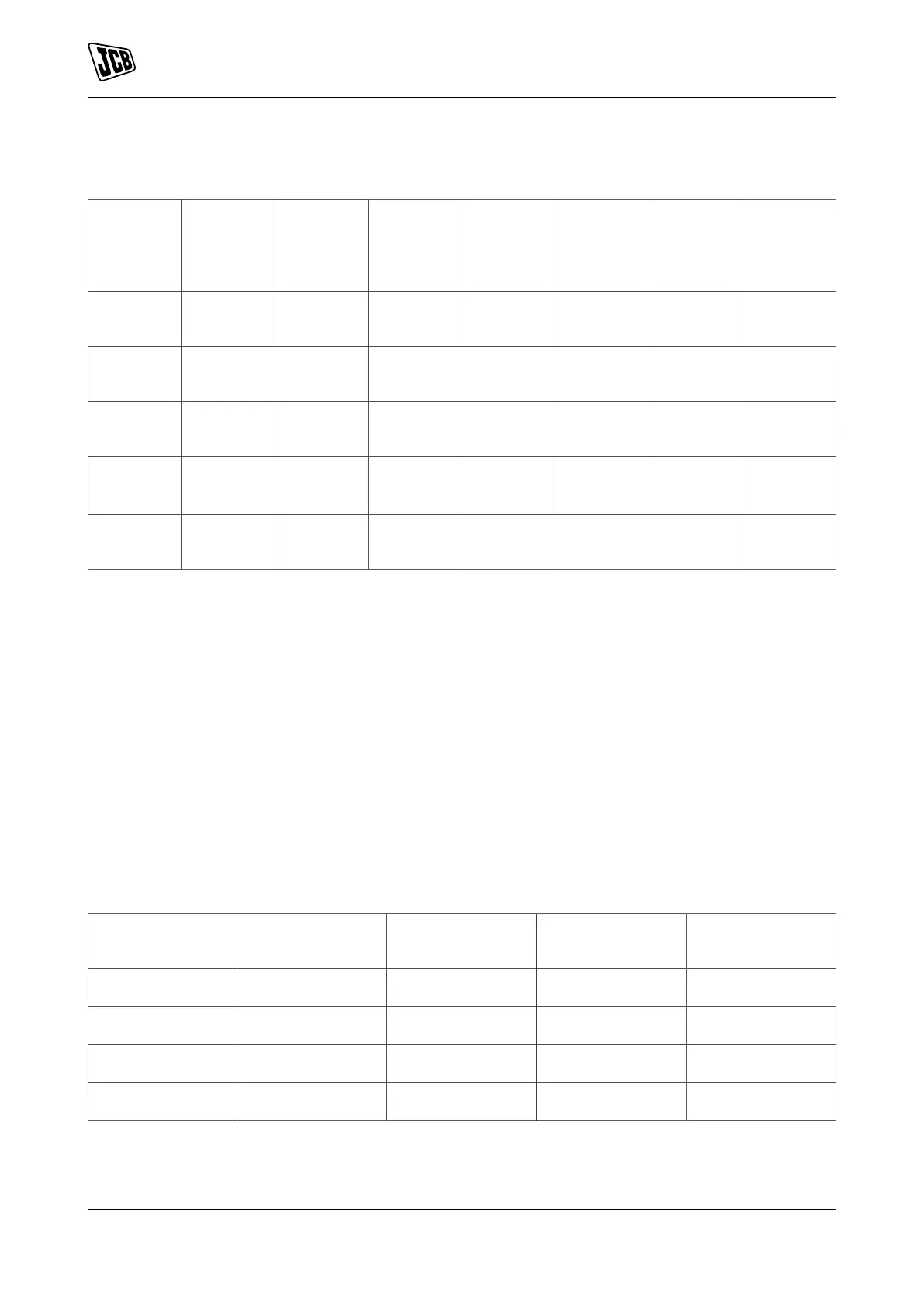Technical Data
Fluids, Lubricants and Capacities
138 9831/7750-1 138
Table 27.
Property
Class of
Fuel
Flash Point Distillation
(90% Distil-
lation Tem-
perature)
Pour Point Mass % of
Residual
Carbon in
10% Resid-
ual Oil
Cetane
(2)
Kinemat-
ic Viscosi-
ty 30 °C (86
°F) mm2/s
(cSt)
(3)
Sulfuric
Mass %
Special
No.1
Over 50 °C
( 121.9 °F)
Below 360
°C ( 679.5
°F)
Below 5 °C
( 41.0 °F)
Below 0.1 Over 50 Over 2.7 Below 0.05
No.1 Over 50 °C
( 121.9 °F)
Below 360
°C ( 679.5
°F)
Below -2.5
°C ( 27.5 °F)
Below 0.1 Over 50 Over 2.7 Below 0.05
No.2 Over 50 °C
( 121.9 °F)
Below 350
°C ( 661.5
°F)
Below -7.5
°C ( 18.5 °F)
Below 0.1 Over 45 Over 2.5 Below 0.05
No.3 Over 45 °C
( 112.9 °F)
Below 330
°C ( 625.5
°F)
(1)
Below -20
°C ( -4.0 °F)
Below 0.1 Over 45 Over 2.0 Below 0.05
Special
No.3
Over 45 °C
( 112.9 °F)
Below 330
°C ( 625.5
°F)
Below -30
°C ( -22.0
°F)
Below 0.1 Over 45 Over 1.7 Below 0.05
(1) It is below 350 °C ( 661.5 °F) in case of Kinematic viscosit 30 °C ( 86.0 °F) is below 4.7 mm2/c (4.4 cSt).
(2) It is possible to use cetane number.
(3) 1 mm2/s = 1 cSt
U.S.A. (SAE J313)
Automotive and railroad diesel fuels, in general, are derived from petroleum refinery products which are
commonly referred to as middle distillates. Middle distillates represent products which have a higher boiling
range than gasoline and are obtained from fractional distillation of the crude oil or from streams from other
refining processes. Finished diesel fuels represent blends of middle distillates. The properties of commercial
distillate diesel fuels depend on the refinery practices employed and depend on the refinery practices employed
and the nature of the crude oils from which they are derived.
Thus, they may differ both with and within the region in which they are manufactured. Such fuels generally
boil over a range between 163 °C ( 325.2 °F) and 371 °C ( 699.3 °F). Their makeup can represent various
combinations of volatility, ignition quality, viscosity, sulfur level, gravity, and other characteristics.
Additives may be used to impart special properties to the finished diesel fuel.
Table 28.
Grade of Diesel Fu-
el Oil
Flash point Distillation Tem-
peratures °C (°F)
90% Point
Viscosity Kinemat-
ic cSt or mm2/s at
40 °C ( 103.9 °F)
Cetane Number
No.1-D 38 °C ( 100.3 °F) Below 288 °C
( 550.0 °F)
1.3 to 2.4 Over 40
No.1-DLS 38 °C ( 100.3 °F) Below 288 °C
( 550.0 °F)
1.3 to 2.4 Over 40
No.2-D 52 °C ( 125.5 °F) 282 –338 °C ( 539.2
–639.9 °F)
1.9 to 4.1 Over 40
No.2-DLS 52 °C ( 125.5 °F) 282 –338 °C ( 539.2
–639.9 °F)
1.9 to 4.1 Over 40
Biodiesel Fuel (B5)
Kubota only permits to use the biofuel (BDF) that satisfies the following conditions:

